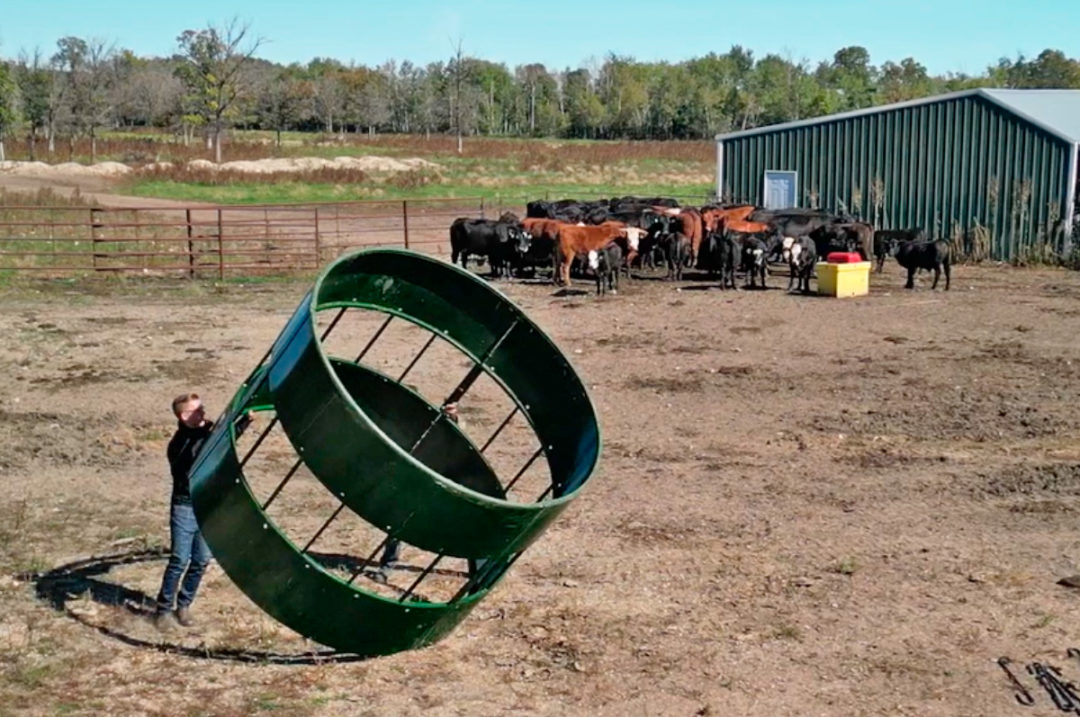Each new season brings change, and some are easier to embrace than others. It can be hard to get excited about winter, especially on a cattle operation. The shorter days, colder temperatures and inclement weather can bring extra work and challenges. Following these four steps for safer winter cattle handling can help take the sting out of winter weather.
Step 1: Plan ahead
That old saying, “An ounce of prevention is worth a pound of cure,” makes sense when it comes to winter cattle handling. There are several steps you can take ahead of the winter months to make things easier for both cattle and handlers.
-
Winterizing facilities is an important part of planning ahead and should ideally be done in the fall before the weather starts turning cold. However, it is never too late to make some changes ahead of snowstorms and bone-chilling temperatures.
-
Installing windbreaks is the single-biggest addition that will help cattle through the cold winter months. Feed areas and cattle equipment should also be placed behind windbreaks to help cattle stay warm, and handlers also appreciate windbreaks when it comes to checking on cattle. Avoid placing windbreaks in areas where the snow drifts, as this can create hazardous situations.
-
Taking steps to reduce mud and manure buildup at gates, water tanks and around cattle equipment and bale feeders is important. These high-traffic areas are prone to becoming muddy, which can quickly become a bad situation and lead to herd health concerns such as hoof rot or equipment issues like getting a tractor stuck when trying to feed bales.
- Adding extra drainage and moving feeders to higher ground with a downward slope, or switching up their locations periodically, drastically reduces the amount of mud and manure in one area. This improves herd health and lowers stress levels for all.
Step 2: Prepare cattle
Cattle that are prepared for winter will manage better in colder weather.
-
Assess the body condition score (BCS) of every animal. Ideally, they should all be at a 5 prior to the winter months. One easy way to check the BCS is to work each animal through your cattle handling system and individually assess them. Separate thin cows into a different group as they leave the chute so you can increase their feed ahead of winter.
-
Ensure cattle have all their necessary vaccines while assessing their BCS. Have anything you may need ready ahead of time and administer as needed while the cattle are being worked through your handling system.
- Any spring or summer calves should be weaned well before the winter months. Calves and cows should be allowed enough time to acclimate to that stressor before the added stress of winter weather.
Step 3: Consider diet and nutrition
Every drop in temperature must be accompanied by increased feed intake for cattle to successfully navigate the winter weather. This is even more important for those cattle with a lower BCS, any pregnant cows and heifers.
-
Water access remains essential. Cattle will still drink about 11 gallons of water daily, even in the colder months. Using stock tank heaters and automatic heated watering systems ensures cattle have access to fresh, clean water during the winter.
-
Eating and digestion help cattle stay warm; hay and other roughages play a big role in the winter months. Investing in a bale feeder that is specifically designed to minimize bale waste by suspending them off the ground helps keep hay clean and makes your bales go even further by controlling cattle intake.
- Consider speaking with a nutritionist or veterinarian about any vitamin and mineral supplements your cattle may need. Phosphorus is commonly added to cattle diets in the winter to meet their nutritional needs.
Step 4: Emphasize low-stress handling
It is always important to keep cattle stress levels low, which can be done by using low-stress handling techniques. It is critical in bad weather, when conditions may be more slippery, everyone is colder and you want to conserve energy.
-
Approach cattle handling in cold weather the same as in extreme heat. Take it slowly so neither cattle nor handlers get hot and sweaty, as this can make you colder in the end. Using low-stress handling principles will also minimize slips, falls and costly injuries. When it comes to working cattle with your equipment in the winter, the same ideas apply. Your cattle equipment should work with animal science and allow you to practice those principles.
-
Watch the weather. It is easier to handle winter weather, and keep stress levels low, when you can be proactive rather than reactive. Try to plan around the weather whenever possible.
- Complete chores and basic upkeep on warmer days and when it is less windy. This makes tasks such as bedding up cattle with fresh straw and ensuring they have plenty of feed before a blizzard comes or temperatures drop much more pleasant. This also makes your chore list a little shorter on colder days and leaves room for any unexpected challenges.
Winter weather is a fact of life for many of us. Instead of dreading the season, preparing ahead and practicing safe winter cattle handling can help us embrace the cold temperatures and adverse conditions. This in turn will help you be ready for spring.






